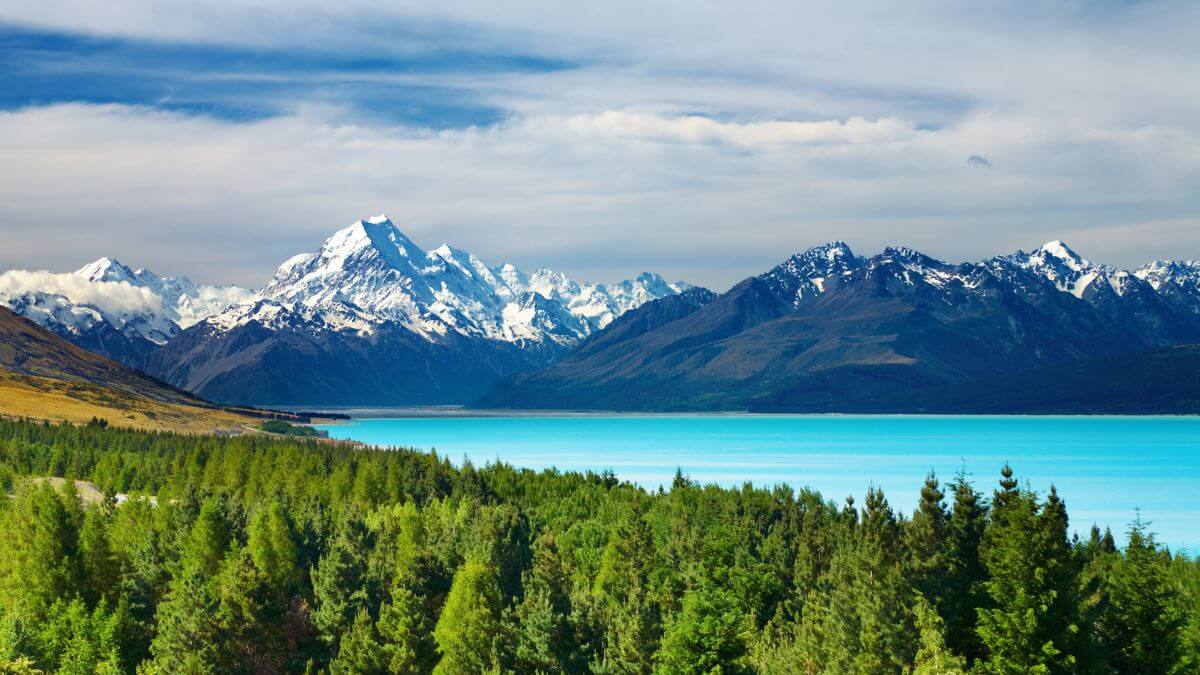The glaciers begin their journey high in the valley and move down inch by meter like a glacier. The huge wonders simply follow their course down the mountain road, cutting everything in their path. Giant valleys still stand as a tribute to their might, forming some of New Zealand’s most famous vistas, such as Milford Sound.
Although Franz Josef and Fox Glaciers are the most well-known glaciers in New Zealand, others can be found throughout the country, from Mt Ruapehu to Mt Tasman. Indeed, New Zealand has over 3,000 glaciers! You will get a one-of-a-kind opportunity to examine some of them.
Here are ten facts about New Zealand’s glaciers that you probably didn’t know!
The greatest glacier is 600 meters (1,969 feet) deep and 29 kilometers (18 miles) long.
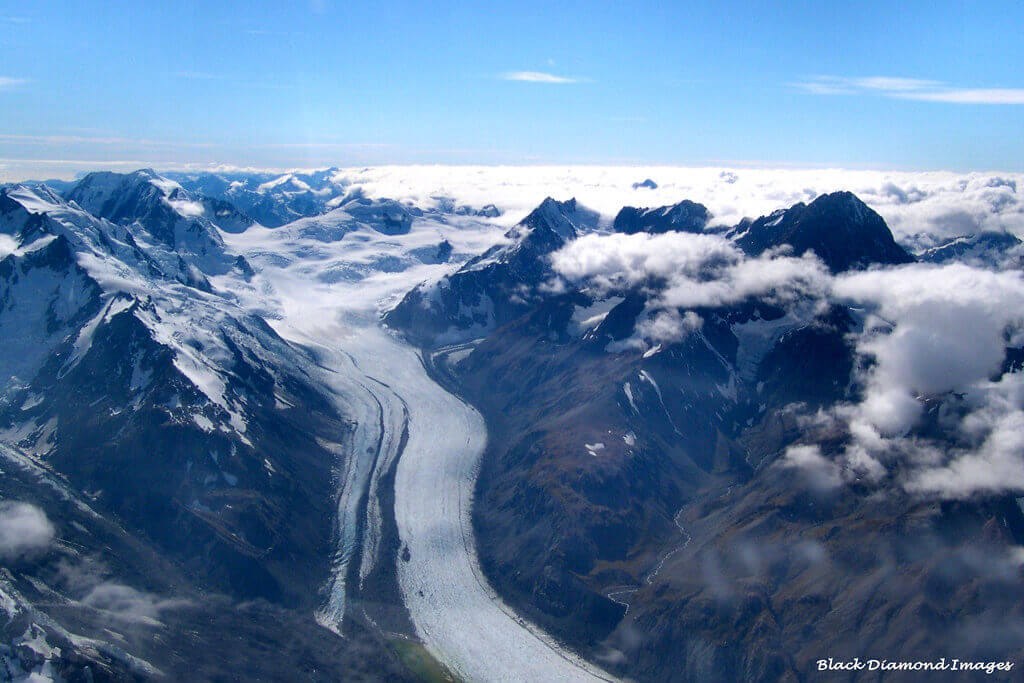
Tasman Glacier in Aoraki Mt Cook National Park is New Zealand’s longest and widest glacier. It was united by the adjacent Murchison, Hooker, and Mueller glaciers 22,000-16,000 years ago to form a massive 115km (71 mi) long glacier. The magnificent Lake Pukaki was produced by thousands of years of receding ice from the massive glacier.
Because of its glaciers, New Zealand was originally an island.
The sea level around the country plummeted substantially during the Ice Age. The water is trapped in glaciers, exposing the seafloor below. When the Cook Strait dried up, New Zealand became a single big island. Stewart Island is also linked to the mainland. In essence, New Zealand is a massive glacier!
Glaciers carry gold!
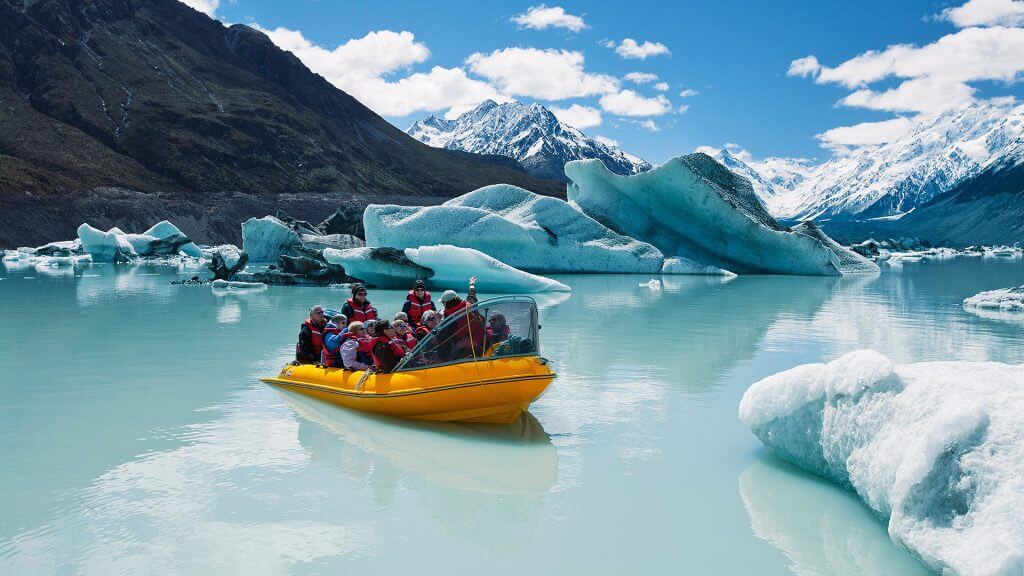
Gold is found in river beds, streams, and beaches because of Ice Age glaciers. Glaciers pushed gold down mountains, rivers, and eventually out to sea, transforming beaches into a dazzling coastline that triggered the 1860 Otago and West Coast gold rush!
Glaciers are responsible for the appearance of New Zealand’s rivers and lakes…
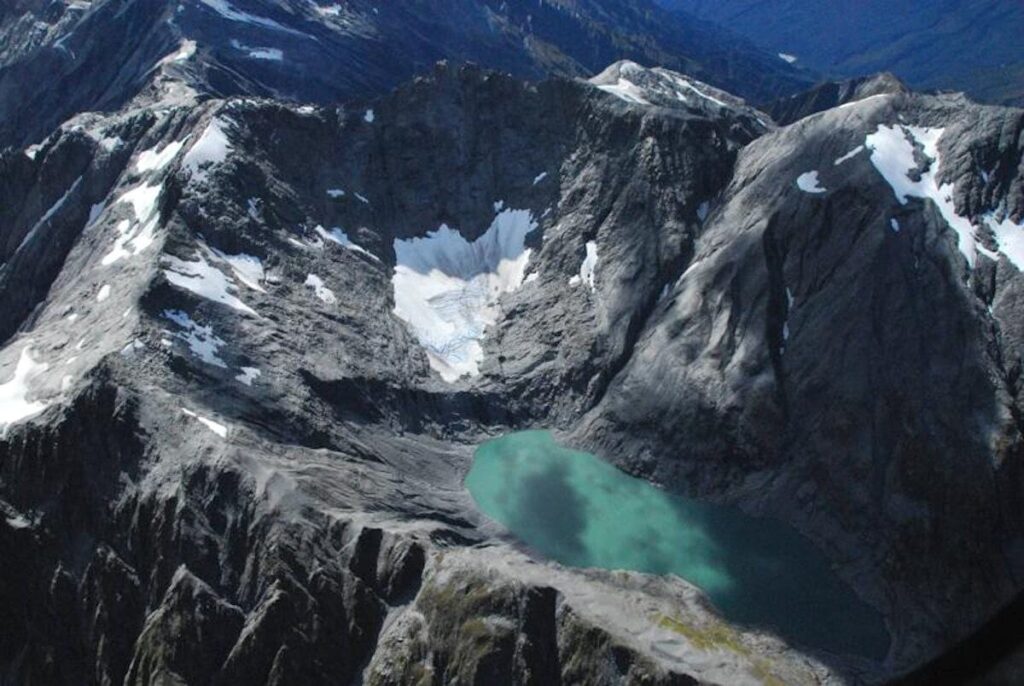
The milky blue water that flows from melting ice is the consequence of finely pulverized ice, which imparts the hue to the water. This pigment is known as rock powder. During the Ice Age, winds picked up rock powder from the Southern Islands’ inland glaciers and dusted the Banks Peninsula, hundreds of kilometers away, with a meter-thick covering of rock powder.
On one volcano, there are 18 glaciers.
Mt Ruapehu contains 17 glaciers that originate from its top, in addition to a glacier hidden in its crater. Whangaehu, Mangatoetoenui, and Summit Plateau are the three greatest glaciers. Watch How to Get to Mt Ruapehu Crater Lake in Winter to walk the glacier yourself.
Glacier devices are so large that they can house buildings.
Snow on a glacier can conceal fractures large enough to house buildings. Glaciers form high in the mountains as a result of several meters of snowfall, which solidifies and hardens with time, transforming it into ice. This is the start of the glacier. As it falls into the valleys of the mountains, the weather eats away at its surface, forming cracks and fissures up to 60m (197ft) deep. These can then be covered up by snow. Always exercise caution when walking on or near glacier sources.
There are rock glaciers!
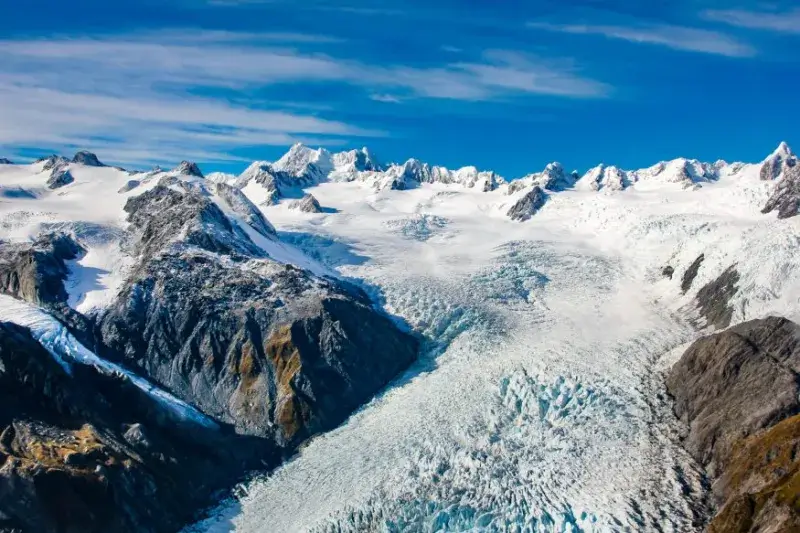
Some glacial glaciers may exist in the South Island’s dry mountains. A glacier is a frozen mass of snow and loose rock. The ice acts as the glue that keeps the rocks together in the middle and between all of the gaps. The process is so extensive that it resembles a slow-moving rocky river.
The Franz Josef and Fox Glaciers cause flash floods.
The West Coast’s Franz Joseph and Fox Glaciers are to blame for thousands of years of catastrophic floods. Melted snow accumulated in the fissures between the two mountain slopes and gradually froze. The imprisoned liquid water will only be released when the glacier sections that are holding it back shatter. Then it can climb to the valley’s bottom.
Inside the ice, two planes have been uncovered.
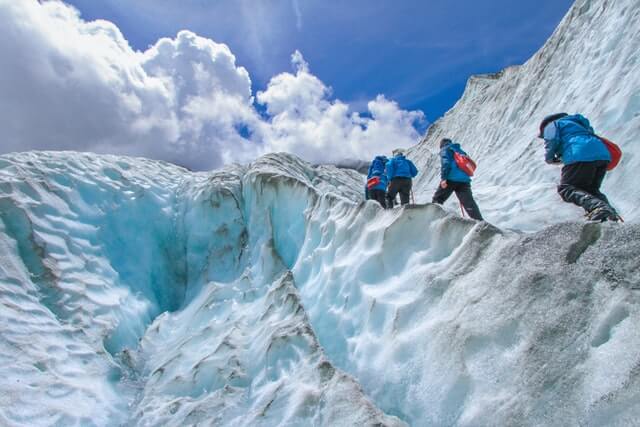
The Mangatoetoenui Glacier on Mount Ruapehu is advancing at a relatively sluggish 20m (66ft) per year, as determined by a plane crash in 1952. After 31 years, the plane reappeared. It finally broke free from the glacier wall ahead, trapped in time in this slow-moving ice carousel. A plane crashed into Franz Joseph in a similar incident in 1943. Six years later, when the plane appeared over the front of the glacier, it showed the glacier flowing at high speed. Every year, I gain 600m (1,969ft).
By 2100, Franz Josef will have shrunk by 38%.
Glaciologists – yeah, that’s the name for experts who study glacier activity – concluded in 2008 that by 2100, Franz Joseph will have lost 38 percent of his bulk. People, global warming is a reality, therefore be a green traveler! If you like that fact (well, maybe not “like,” but you get the idea), then check out these 10 things to do in New Zealand before they go.
Top 7 Destinations That Attract Thousands Of Tourists In New Zealand
Top 5 winter locations that make New Zealand’s south island a gem
5 Hot Springs in New Zealand that will make you forget it’s winter
